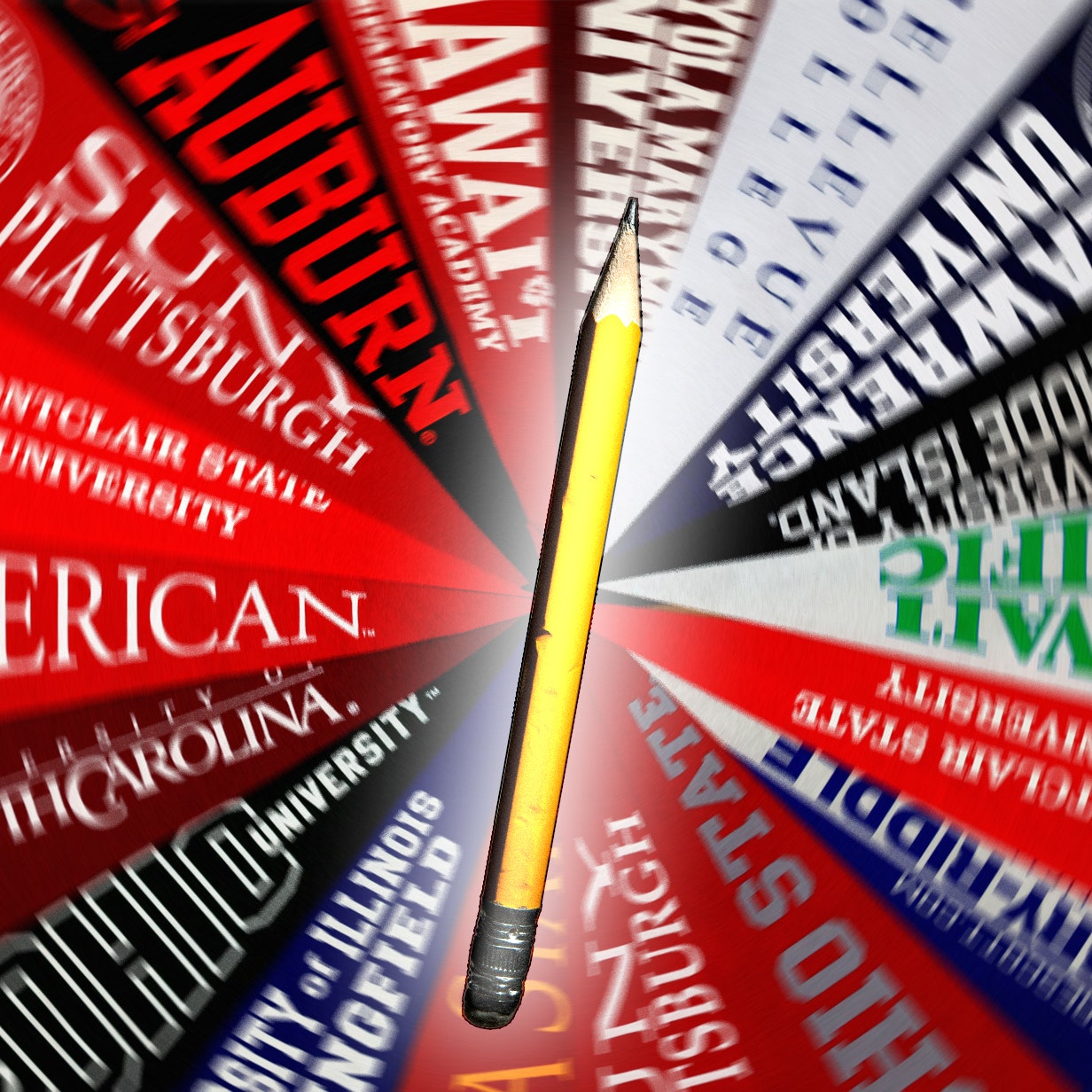After Julia Dixon graduated from the University of Michigan in 2014, her family and friends asked for her help with the college application process. Dixon was happy to share her recently earned expertise about the world of higher education but soon realized how many parents and students in her community needed help and how hard it was for them to access that support.
The ratio of college counselors to students in the US, according to the American School Counselor Association, is one for every 376 students. Many students don’t have proper access to a college counselor to help them with admissions or pick which schools and areas of study might suit them best. Hiring a private college counselor is an option, but that can cost thousands of dollars.
In 2023, Dixon founded ESAI, a platform powered by artificial intelligence designed to assist students with the college admissions process. She also posts videos on TikTok about college planning and talks about how AI tools can be supportive to kids who don’t know what their career options are. Access to the AI platform starts at around $21 per month, far less than private counseling.
The Right Fit
ESAI uses a matching algorithm, Dixon says, to help students understand all the factors that go into picking a school.
First, ESAI directs students to a “major mentor” and then to the school matchmaker. These tools assess things like the students’ future goals, their sociability, the class size they thrive in, and whether they want to live near the campus. The results are highly personalized.
“A lot of kids come to us when they’re more actively applying to school,” Dixon says. They may know where they want to apply and just need help writing their admissions essays or beefing up their applications. “Our college essay support and quantifying calculator helps kids quantify the impact from activities they’ve already done,” she says. For example, if a student spends a lot of time babysitting younger siblings, the software can help them quantify that time as leadership skill-building and so they can put it on their application as a learned skill.
Spending Wisely
While finding the right school and major are top of mind for most families, so is the cost of higher education. “A huge piece is the financial side,” Dixon says. “How do we weigh options for in-state versus out-of-state tuition? How do we look at scholarships that can supplement you?” ESAI’s scholarship tool matches a student’s hobbies and interests as well as their demographics and financial situation to pair them with the best scholarship options. For example, there are scholarships available for students who are first-generation Americans or for women who are interested in STEM: science, technology, engineering, and math programs.
Jon Carson started the College Guidance Network, an AI-powered counseling platform, when his son was a sophomore in high school. Back then, Carson couldn’t get an appointment with the school counselor, and there were few resources specifically for parents.
The conversations that families have about college—which ones to apply to, which ones they can afford—typically happen after hours, Carson says. “We are talking to our kids at night, on the weekend, and during vacation, because during the day they’re in history class and we’re at work. Well, counselors are out of the building at night, on the weekend, and during vacation. It’s an unfortunate mismatch.”
To remedy that divide, he created the College Guidance Network, a web platform with advice from more than 375 experts who understand the application process. The site has a library of content as well as videos and PDF resources about the college application process that parents and kids can review together. It also offers “office hours” with an admissions expert. The site’s tagline is “Experts for everyone, all in one place.”
The expert content covers four main stages of college planning: discovery, admissions steps, financial aid, and the parent-teen dynamic, so parents can learn how to work with their children during this process when, typically, the teen might be reluctant to take advice from their parents.
Students and parents are guided through the selection process by Eva, an AI counseling assistant, which surfaces advice drawn from that library of expert data and can also turn to the internet to find more individualized information, like application due dates for specific colleges or what the registration deadlines are for the SAT and ACT tests. The system creates a calendar with due date reminders so students can more easily hit those deadlines.
The system is provided by college counselors in 60 high schools, and a dozen college admissions offices are signing up to sponsor Eva for inquiring families to lower their admissions anxiety. Eva was recently also made available to the public for a monthly fee starting at $15, so students and their families can access the system from home.
Life Coaches
Emily Pacheco is the associate director of admissions at Case Western Reserve University and the founder of Edhub.ai, an organization that encourages ethical AI adoption in college admissions. She says that kids today are using AI like a life coach. “I really look at it as a thought partner,” Pacheco says. “The number one usage of ChatGPT right now is for therapy and companionship. People are using this technology to help them make decisions about their lives, and students are using it to help them navigate the college admission process.”
While some high school and college students may be using generative AI to cheat, write essays, or solve homework problems, some educators feel like it doesn’t cross a line to use it as a study partner, a tutor, or as a helper to tighten up writing. Pacheco says the essay writing process can be done ethically with the help of AI. “We talk about brainstorming and outlining and getting feedback like, ‘Hey, is my essay saying what I want it to say to the audience? Is it going to be received in the way that I expect it to be received?’ AI [gives] pretty thoughtful responses that sometimes can be better received than responses from a parent or even a college counselor.”
Additionally, these new AI-powered guidance counselor programs can help students find alternate paths in life if their interests are pointing them somewhere other than a four-year college. “There are really great community colleges that might be the next best step,” says Pacheco. Other students might benefit more from going to trade school.
This type of school selection guidance is helpful not only for students but also for colleges and universities, she says, since fewer students are applying to most schools. While there are thousands of higher-education programs in the US, the top 30 or so schools receive an abundance of applications, and the rest may struggle to fill their student quotas.
“Everyone knows about the demographic cliff,” says Geoff Baird, founder of the enrollment management platform Enroll ml. Fewer students are applying to colleges, partly because of declining birth rates but also because the high cost of higher education makes it harder to see the return on investment. “This is all fundamentally changing the enrollment environment for institutions,” Baird says.
Many college recruiters attend high school college fairs to find the kids who will thrive in their programs. Enroll ml helps college recruiters make those same types of connections without having to travel to meet students face-to-face. The platform uses machine learning to help a higher-education institution more effectively identify students within their applicant pool who would be a good fit. Then it creates personalized communications for admissions teams so those institutions can reach out to those students and develop relationships, Baird says.
The system analyzes the timing, patterns, and interactions of hundreds of behaviors—such as which types of communications the students engage with and how quickly they respond, or if they visited the school or browsed online—to know which schools students are seriously considering. This is especially needed today since over 1,000 colleges and universities use Common App, a program which enables students to apply to dozens of schools with the press of a button.
“An institution has highly limited resources on the admissions and enrollment side, so when they are spending time on students who are not actually interested, that is taking away time and attention from students who really are,” Baird says.
In this competitive and chaotic landscape, whether a student is looking for the right school or a school is looking for the right student, AI is helping them find one another.



